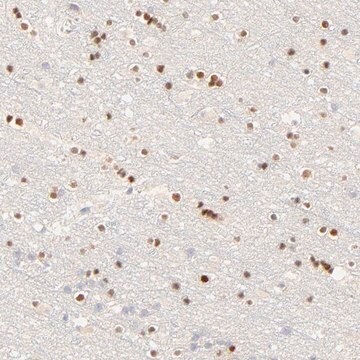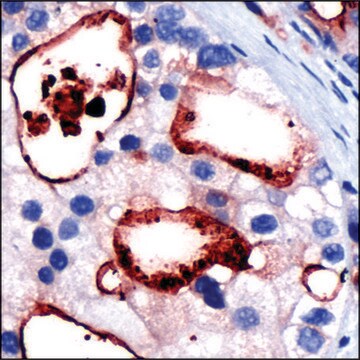P2871
Anti-Cytokeratin pan antibody, Mouse monoclonal
clone C-11, purified from hybridoma cell culture
Sinónimos:
Anti-CK-4, Anti-CK4, Anti-CYK4, Anti-K4, Anti-WSN1
About This Item
Productos recomendados
origen biológico
mouse
Nivel de calidad
conjugado
unconjugated
forma del anticuerpo
purified from hybridoma cell culture
tipo de anticuerpo
primary antibodies
clon
C-11, monoclonal
Formulario
buffered aqueous solution
técnicas
immunocytochemistry: 15-30 μg/mL using methanol/acetone-fixed PTK-2 cells or A549 - human lung carcinoma cells
immunohistochemistry (formalin-fixed, paraffin-embedded sections): 15-30 μg/mL using human skin
immunohistochemistry (frozen sections): suitable
microarray: suitable
western blot: suitable
Condiciones de envío
dry ice
temp. de almacenamiento
−20°C
modificación del objetivo postraduccional
unmodified
Categorías relacionadas
Descripción general
Aplicación
Acciones bioquímicas o fisiológicas
Forma física
Cláusula de descargo de responsabilidad
¿No encuentra el producto adecuado?
Pruebe nuestro Herramienta de selección de productos.
Código de clase de almacenamiento
10 - Combustible liquids
Clase de riesgo para el agua (WGK)
WGK 2
Punto de inflamabilidad (°F)
Not applicable
Punto de inflamabilidad (°C)
Not applicable
Equipo de protección personal
Eyeshields, Gloves, multi-purpose combination respirator cartridge (US)
Elija entre una de las versiones más recientes:
¿Ya tiene este producto?
Encuentre la documentación para los productos que ha comprado recientemente en la Biblioteca de documentos.
Nuestro equipo de científicos tiene experiencia en todas las áreas de investigación: Ciencias de la vida, Ciencia de los materiales, Síntesis química, Cromatografía, Analítica y muchas otras.
Póngase en contacto con el Servicio técnico








